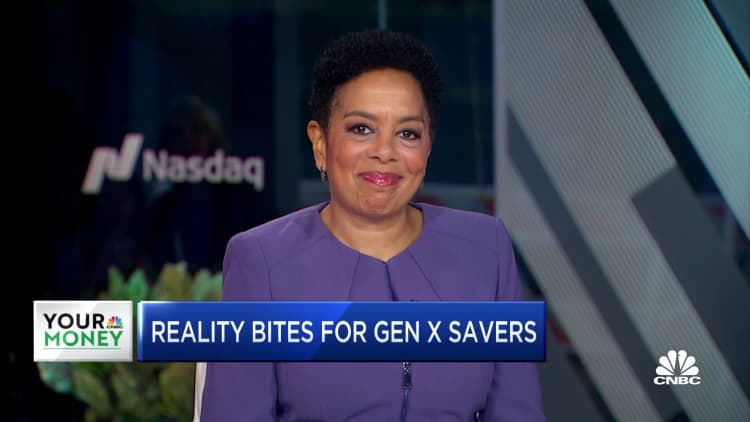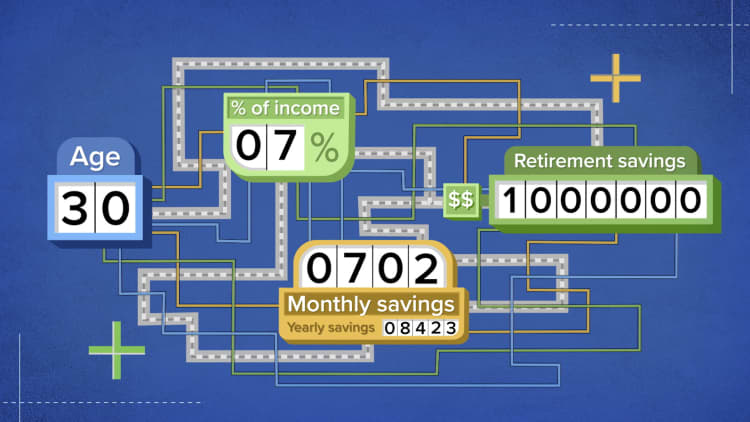10’000 Hours | Digitalvision | Getty Images
What are annuities?
Annuities are issued by insurance companies. Consumers generally hand over a lump sum of money in exchange for an income stream for life, similar to a pension or Social Security.
Financial planners sometimes recommend them to guard against the risk of outliving one’s savings — though some kinds are much better at doing so than others, they said.
“There are all different types of annuities, and to me, the majority are not necessarily good,” said Carolyn McClanahan, a certified financial planner based in Jacksonville, Florida, and a member of CNBC’s Advisor Council.
Why annuity sales spiked in 2023
In 2023, the U.S. Federal Reserve raised its benchmark interest rate to the highest level in 22 years. That nudged up the returns and income that consumers could get from annuities, thereby making them more attractive, said Todd Giesing, head of annuity research at LIMRA.
While the stock market has bounced back from a dismal 2022, there’s “still a lot of uneasiness with investors,” who are grappling with unknowns like the trajectory of inflation and the economy, Giesing said.

Such malaise pushed consumers to seek out relative safety, in fixed-rate deferred annuities, for example. They’re like certificates of deposit in annuity form, protecting principal while delivering a fixed return over a few years.
Fixed-rate deferred annuities currently pay average rates around 4.5% — triple the 1.5% just two years ago, Giesing said. They constituted the bulk of overall annuity sales this year, at an estimated $140 billion.
What kind of annuities financial advisors recommend
There’s somewhat of a mismatch between the types of annuities that consumers buy and the ones typically recommended by financial advisors.
Generally, planners use annuities to hedge against longevity risk — the risk of living so long that one outlasts their retirement savings.
An annuity might help cover any shortfall in funding for basic necessities like food and housing, after accounting for guaranteed income streams like Social Security and pensions.
There are all different types of annuities, and to me the majority are not necessarily good.
Carolyn McClanahan
certified financial planner based in Jacksonville, Florida
McClanahan, founder of Life Planning Partners, generally uses single premium immediate annuities — also known as SPIAs — with clients.
These annuities are the simplest, she said. Generally, a buyer hands over a lump sum to an insurer, which immediately starts paying a fixed monthly sum to the buyer for the rest of their life.
The “sweetest time” to buy a SPIA is when people are in their late 70s or early 80s, when it becomes clearer that a healthy retiree may have the potential to live a long time and run out of money, McClanahan said.
Paul Auslander, a CFP and director of financial planning at ProVise Management Group in Clearwater, Florida, doesn’t use many annuities with clients. When he does, he generally opts for SPIAs over other annuities to generate an income stream.
Deferred-income annuities, or DIAs, generally work the same way. However, they don’t start paying right away: People might buy them in their 60s, for example, and the annuity will pay a set monthly amount in the future, perhaps in one’s 70s or 80s. The income stream is generally larger than with a SPIA but carries additional uncertainty around when one might need that money.
In the year through Sept. 30, consumers bought $9.7 billion of SPIAs and $2.8 billion of DIAs, according to LIMRA.
By comparison, they bought $71 billion of indexed annuities and $39 billion of variable annuities. Such annuities are often more complex and carry higher fees than SPIAs and DIAs, according to financial advisors. Insurance agents may also have an incentive to sell more of them to consumers because they often carry higher commissions, advisors said.

One potential downside of SPIAs and DIAs is that buyers generally can’t get their money back once they hand it over to an insurer.
Conversely, indexed and variable annuities carry so-called income riders that can offer both a future income stream and liquidity if buyers need to access their money early. However, they generally carry relatively high costs and strict rules about access, which have financial penalties if breached, planners said.
“All these bells and whistles are really hard to understand,” McClanahan said. “If you can’t explain it in two pages, then is it really a good thing?”
Don’t miss these stories from CNBC PRO:

